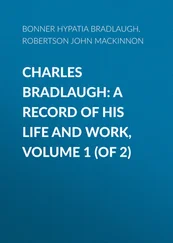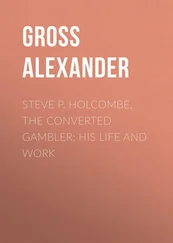Brad Stevens - Monte Hellman - His Life and Films
Здесь есть возможность читать онлайн «Brad Stevens - Monte Hellman - His Life and Films» весь текст электронной книги совершенно бесплатно (целиком полную версию без сокращений). В некоторых случаях можно слушать аудио, скачать через торрент в формате fb2 и присутствует краткое содержание. Год выпуска: 0101, Издательство: McFarland & Company, Жанр: Старинная литература, на английском языке. Описание произведения, (предисловие) а так же отзывы посетителей доступны на портале библиотеки ЛибКат.
- Название:Monte Hellman: His Life and Films
- Автор:
- Издательство:McFarland & Company
- Жанр:
- Год:0101
- ISBN:нет данных
- Рейтинг книги:4 / 5. Голосов: 1
-
Избранное:Добавить в избранное
- Отзывы:
-
Ваша оценка:
- 80
- 1
- 2
- 3
- 4
- 5
Monte Hellman: His Life and Films: краткое содержание, описание и аннотация
Предлагаем к чтению аннотацию, описание, краткое содержание или предисловие (зависит от того, что написал сам автор книги «Monte Hellman: His Life and Films»). Если вы не нашли необходимую информацию о книге — напишите в комментариях, мы постараемся отыскать её.
Monte Hellman: His Life and Films — читать онлайн бесплатно полную книгу (весь текст) целиком
Ниже представлен текст книги, разбитый по страницам. Система сохранения места последней прочитанной страницы, позволяет с удобством читать онлайн бесплатно книгу «Monte Hellman: His Life and Films», без необходимости каждый раз заново искать на чём Вы остановились. Поставьте закладку, и сможете в любой момент перейти на страницу, на которой закончили чтение.
Интервал:
Закладка:
After the opening credits, the film originally started with a snowy landscape accompanied by the words "The Huertgen Forest, Germany 1944." In Sinister's print, this is interrupted by the first Hellman-directed sequence, which lasts 2m 48s and begins with five members of a German ski patrol ("They were probably skiers we recruited in Mammoth" 14) observed from inside a camera's viewfinder. A reverse shot shows Lieutenant Factor taking a photo, then hiding under a bridge. The Germans cross the bridge and vanish into the distance.
After some 3 minutes of Corman's film, we cut to the second (and last) of Hellman's additions, which runs 8m 14s and begins with Grammelsbacher and Ciccola sitting by a river. Unfortunately, print damage has resulted in the loss of this sequence's opening from Sinister Cinema's tape; it now begins in the middle of a conversation, during which the two men discuss their lives. Factor then appears and tells them that "tomorrow we're gonna split up into two groups. We can cover more area that way." At this point, Hellman dissolves to Factor, Grammelsbacher and Ciccola on skis the following morning. As the three men come to a halt, they are fired upon by a German patrol. Factor circles around behind the Germans and shoots several of them in the back. The last remaining German aims at Factor, but is shot by Ciccola. As the Americans look down at the dead bodies, the image fades to black.
Although the final shot of Hellman's sequence anticipates a motif from Corman's film — that of Factor standing over the corpses of Americans and Germans for whose deaths he has been responsible — the 1962 footage essentially functions as a self-contained unit. Hellman strips the World War II movie of its propogandistic element, and if his attitude is best summed up by Grammelsbacher's "they're human beings and I'm a human being," the tone is less pacifist than existential; having little interest in defending democracy, the soldiers would rather be "anywhere but here," and Factor's initial non-encounter with a Nazi patrol is marked by that vague sense of disappointment and averted confrontation which distinguishes Warren Oates' avoidance of a hostile redneck in Two-Line Blacktop. As so often with Hellman, actions exist in a vacuum, deprived of any but the most immediate resonance. The first scene added to Ski Troop Attack begins in exactly the same way as Beast from Haunted Cave' s new pre-credits sequence, with a character surreptitiously taking photographs, and we are asked to draw no distinction between an action carried out as part of a robbery and an action performed in the name of America's fight against fascism. The authority invoked by Factor (who associates respect for it with the Germans) points to a conflict more internal than external, and it is significant that Factor's method of circling around to attack the enemy from the rear mirrors the way he suddenly appears behind Grammelsbacher and Ciccola.
The most interesting thing about this lengthy dialogue sequence is its aimlessness. The context — with the icy lake, the dark forest visible behind Factor and the constant sound of wind — is explicitly that of Eternity, but the actual conversation is random and purposeless. It may well be that this peculiar assignment enabled Hellman to make a connection between the cinema and his more overtly intellectual theater work. If the impression of a diversion from the main narrative, of time being filled until the plot resumes, can easily be explained by reference to the circumstances of production, it also recalls Waiting for Godot (as well as anticipating the predominant mood of Hellman's later masterpieces).
The next two films Hellman expanded were another matched pair — Last Woman on Earth and Creature from the Haunted Sea —originally shot back-to-back by Corman on location in San Juan, Puerto Rico, during 1960. Last Woman represented the screenwriting debut of Robert Towne, who also appeared (under the pseudonym "Edward Wain") in one of the three lead roles (reportedly because the script was unfinished and Corman didn't want to pay separate air fares for a writer and an actor), and Creature was written in one week by Charles Griffith when Corman decided to extend his stay in Puerto Rico. A satirical comedy of the kind Corman had already attempted with A Bucket of Blood (1959) and The Little Shop of Horrors (1959), Creature' s narrative focuses on gangster Renzo Capeto (Antony Carbone) and his moll Mary-Belle Monahan (Betsy Jones Moreland), who, along with Towne's character Sparks Moran (actually a secret agent whose "real" name is XK150) and Renzo's henchman Pete Peterson (Beach Dickerson), agree to help smuggle gold out of Castro's Cuba. Renzo plans to steal the gold himself by encouraging his Cuban passengers to believe that a monster is in the vicinity. But, after Renzo arranges a shipwreck on a Puerto Rican island, the monster proves to be real. By contrast, Last Woman on Earth (one of Corman's finest films) is a somber drama in which crooked businessman Harold Gern (Carbone), his wife Evelyn (Moreland) and lawyer Martin Joyce (Towne) find themselves perhaps the last survivors of a tantalizingly vague disaster that has wiped out the human race. Interestingly, the film begins with a cockfight, foreshadowing the Corman-produced, Hellman-directed Cockfighter (1974).
Hellman's additions were filmed in Santa Monica during March 1963. The fact that he was able to recruit all three of the original principals (as well as Beach Dickerson) undoubtedly gave him more room to maneuver (though Betsy Jones Moreland is noticeably older and no longer blonde), and the scenes added to Creature from the Haunted Sea are remarkably energetic and inventive. The television version used to be available from Sinister Cinema with a running time of 74m 49s, 15m 55s of which is by Hellman. This print begins with a 5m 38s pre-credits sequence set in Havana, Cuba. The first thing we see is XK150 (Robert Towne) having his tennis shoes polished. After a piece of paper is inserted into his sock, the secret agent starts to leave, only to see his "contact" gunned down by two bearded men (John Fles and Stanton Kaye: "Stanton went on to become an apprentice grip on The Shooting , then later a film maker" 15). After escaping from the assassins, XK150 reads the message in his sock, dons a ridiculous disguise (consisting of sunglasses and a fake moustache), and proceeds to the Santo Domingo bar, where he meets agent XK120, a young woman played by Jaclyn Hellman. After some comically cryptic dialogue, 16XK150 departs.
Twenty-nine minutes fifty-nine seconds into Sinister Cinema's tape, after Renzo and the Cubans agree on Puerto Rico as their destination, we find the second sequence added by Hellman (running 5m 51s and filmed in Newport). It begins with a shot of Renzo looking through a pair of binoculars which he then hands to Sparks/XK150 before telling Pete Peterson to "Ask Tostado and his men to stay below." As Mary-Belle sings a romantic ballad entitled "Creature from the Haunted Sea," the Cubans' boat pulls up alongside Renzo's. The lead Cuban (Dale Wilbourn, "who was Millie Perkins' boyfriend at the time" 17) insists on searching Renzo's boat, but Renzo and the others overpower him and kill all the Cubans (one of whom is played by Stanton Kaye — his second role in the film). The scene ends with Mary-Belle contemptuously rejecting XK150's clumsy seduction attempts ("She was madly in love with me, only she didn't know it yet," he insists in voiceover).
Читать дальшеИнтервал:
Закладка:
Похожие книги на «Monte Hellman: His Life and Films»
Представляем Вашему вниманию похожие книги на «Monte Hellman: His Life and Films» списком для выбора. Мы отобрали схожую по названию и смыслу литературу в надежде предоставить читателям больше вариантов отыскать новые, интересные, ещё непрочитанные произведения.
Обсуждение, отзывы о книге «Monte Hellman: His Life and Films» и просто собственные мнения читателей. Оставьте ваши комментарии, напишите, что Вы думаете о произведении, его смысле или главных героях. Укажите что конкретно понравилось, а что нет, и почему Вы так считаете.


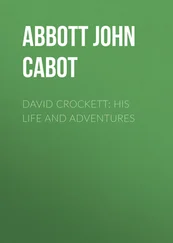
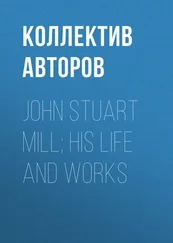
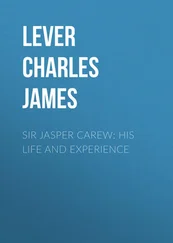
![William Frith - John Leech, His Life and Work. Vol. 1 [of 2]](/books/747171/william-frith-john-leech-his-life-and-work-vol-thumb.webp)

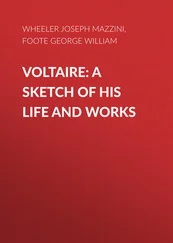
![William Frith - John Leech, His Life and Work, Vol. 2 [of 2]](/books/748201/william-frith-john-leech-his-life-and-work-vol-thumb.webp)
